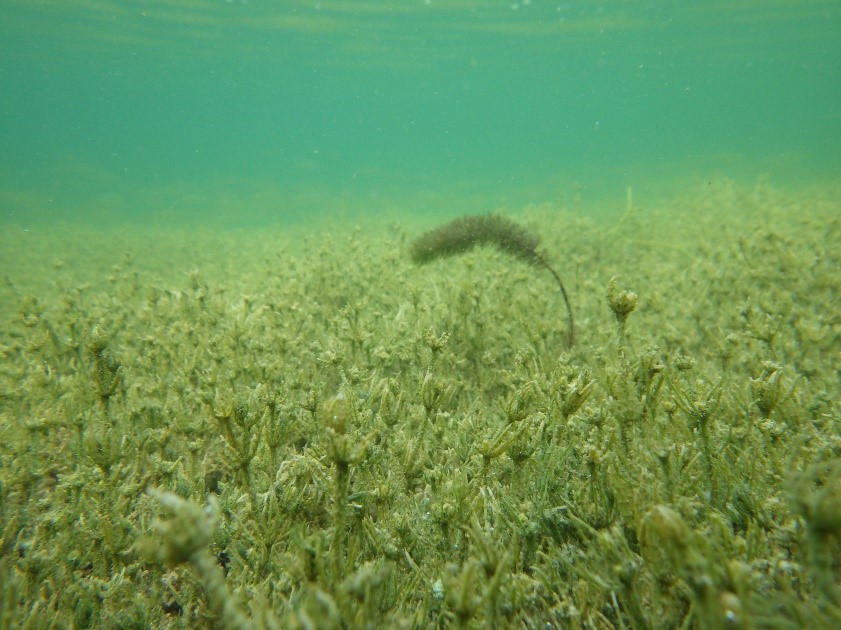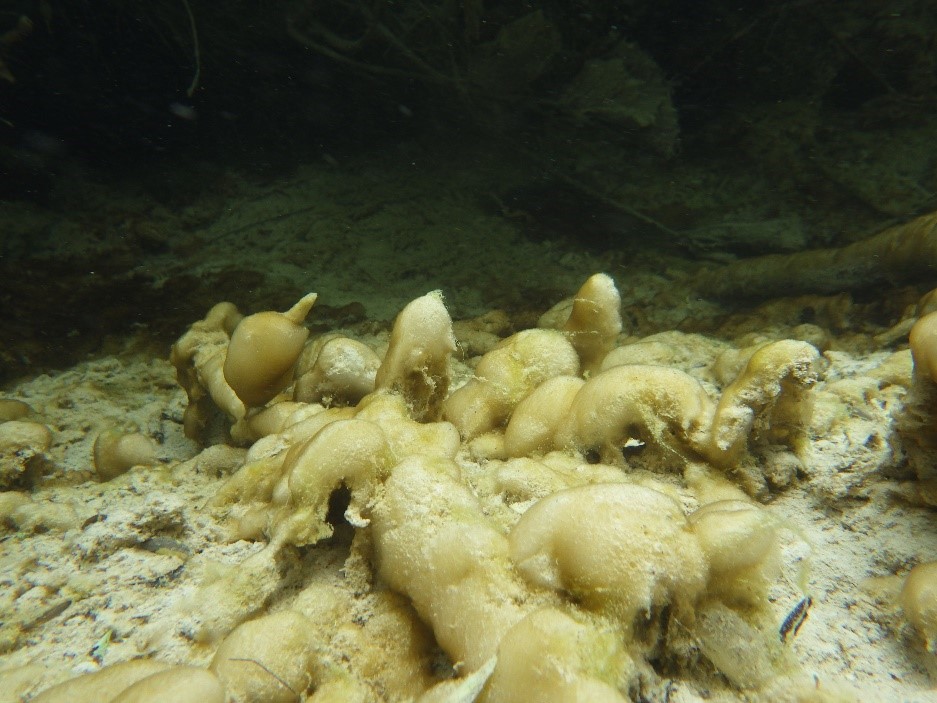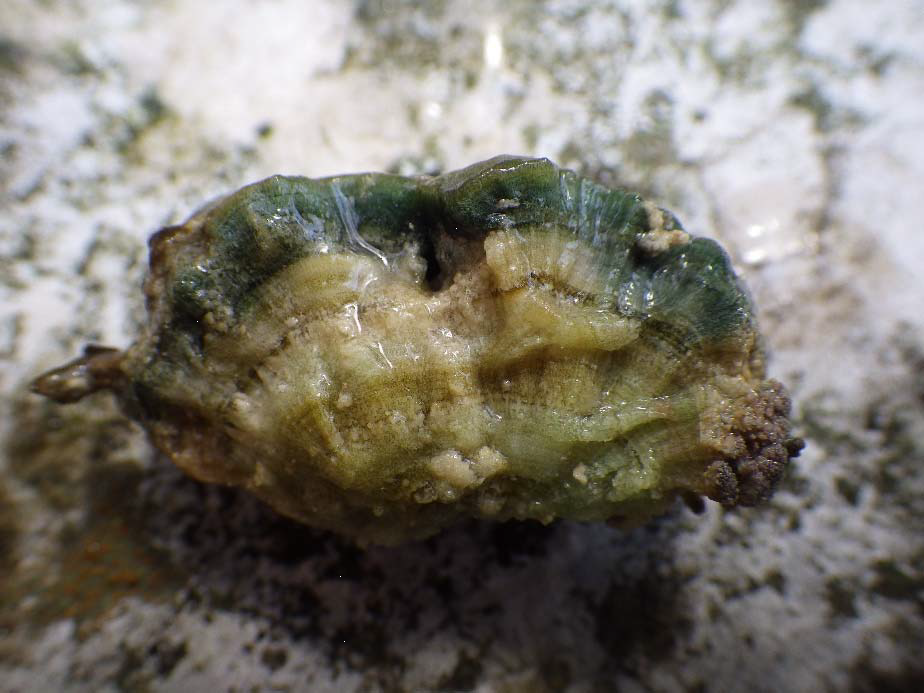Walking along the paths by the lakes, both Upper and Lower Lakes, you may notice greenish or brown clusters on the rocks under the water – these are algae and they are part of a fascinating plant world. Their name “benthic algae” (or phytobenthos) tells us that they live on the bottom of a body of water, such as a lake, river, stream, or at water sources. Due to the fact that benthic algae, as representatives of the plant world, undertake photosynthesis, for which they require light, they always grow where light can reach them.
Macroalgae are algae visible to the naked eye, in contrast to microalgae, that can only be seen with the help of a microscope. Both types of algae can be found in the lakes and on tufa barriers of our Park. In the littoral (coastal) zone of the lake, you will be able to see macroalgae that belong to green algae from the stonewort family (Characeae). These algae, which resemble the horsetail plant, are indicators of good water quality and can be found in all of our lakes. Stoneworts play an important role in carbonate sediment formation because they develop calcium carbonate crystals on their thallus or frond.

Besides macroalgae, aquatic ecosystems also benefit greatly from the presence of microalgae, or algae visible through a microscope, which consist of various species that include cyanobacteria, green algae, red algae and diatoms. Algae form greenish, brown or light brown clusters, making them visible to the naked eye.

Why are algae important for aquatic ecosystems? First of all, we consider algae as primary producers. In other words, they are a source of energy and food for primary consumers, or animal organisms that feed on plant organisms. Examples of such organisms in aquatic ecosystems are various snails and aquatic insect larvae. Macroalgae such as stoneworts strengthen the sediment, while clusters of benthic algae act as a shelter and as such provide a special habitat to invertebrates. Algae found in systems rich in calcium carbonate, such as the Plitvice Lakes, also participate in the process of carbonate crystal precipitation, which is especially characteristic of cyanobacteria and diatoms. Cyanobacteria and diatoms that form periphyton, or a community of organisms at the water surface, act as a nucleus (core) around which calcite crystals accumulate due to the metabolic products in cells of these organisms, which act as glue for the crystals.

Research of benthic algae in the Plitvice Lakes aquatic ecosystem, i.e. at the tufa barriers of the Upper and Lower Lakes and the Plitvica stream under the Veliki slap waterfall, identified 161 species of algae. Most numerous among them were diatoms with 104 species, followed by cyanobacteria. Such a large number of algae certainly proves that the tufa barriers are active and that the plant world covering them is extremely diverse!

Read other interesting stories from the Plitvice Lakes National Park

